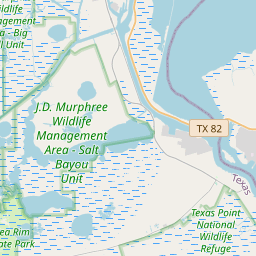Federal Fatalities at the Battle of Sabine Pass
Historical marker location:






Federal Fatalities at the Battle of Sabine Pass
The battle at Sabine Pass on September 8, 1863 was a victory for Lieutenant Richard W. Dowling and his troops, which numbered fewer than 50. Dowling and his Davis guards kept Union gunboats from advancing up the pass. The U.S.S. Clifton and the U.S.S. Arizona ran aground early in the battle. The Clifton and the U.S.S. Sachem, both disabled by cannon fire, surrendered. The Arizona and the U.S.S. Granite City were able to return to federal headquarters at New Orleans.
After the battle, more than 300 federal troops became prisoners of war. Others were killed or missing; many of those had been aboard the Sachem when its boiler exploded as a result of the direct hit on the ship.
John Marshall Carson, a Confederate commissary sergeant, was on board the C.S.S. Uncle Ben, an old freight boat used by the Confederate army. The Uncle Ben towed the two captured gunboats to shore, where Carson and the other crew members aided in removing the dead. The Confederates dug a long ditch near the Dorman Hotel on the northern edge of the townsite of Sabine Pass and near what would become the Port Arthur Canal. There, they buried a reported 28 Union troops. Many others were considered missing, their bodies never recovered.
Excavations in the 20th century confirmed the burial location, much of which has eroded away. Today, the U.S. soldiers and sailors killed and missing at the pass are remembered along with the Confederate troops who engaged them in battle.
(1980, 2004)
As one of the most visible programs of the Texas Historical Commission (THC), historical markers commemorate diverse topics in Texas history, including: the history and architecture of houses, commercial and public buildings, religious congregations, and military sites; events that changed the course of local and state history; and individuals who have made lasting contributions to the state, community organizations, and businesses.
More history nearby
The Texas Rangers, a famous law enforcement agency, were first organized in 1835 to protect settlers from Native American attacks.
In the early 1820s, Empresario Joseph Vehlein obtained a contract to settle 300 families in the region. The land, once inhabited by the Atakapa people, soon attracted settlers of various origins, including Americans, Europeans, and enslaved Africans. The area became known for its fertile soil, offering ideal conditions for agriculture and ranching.
The city of Beaumont was established in the mid-19th century and quickly developed into a major trading and shipping center due to its access to the Neches River and the Gulf of Mexico. The discovery of oil at Spindletop in 1901 marked a turning point in the county's history, as the region experienced a significant oil boom. This brought great prosperity and transformed the area's economy, leading to the development of the petrochemical industry in the following decades.
Throughout the 20th century, Jefferson County witnessed various social and economic changes. It played a key role in World War II, serving as the location for significant military activity, including the establishment of one of the largest military shipbuilding centers in the country. The county also experienced desegregation struggles during the Civil Rights Movement in the 1950s and 1960s, which eventually led to greater equality.
Today, Jefferson County continues to be an important industrial center for petrochemicals and petroleum-related industries. It is also home to a diverse population and offers a mix of urban and rural landscapes, with a variety of cultural and recreational opportunities for residents and visitors.
Jefferson County Timeline
This timeline provides a glimpse into the major events and milestones that have shaped the history of Jefferson County, Texas.
- 1836: Jefferson County is established as a municipality of the Republic of Texas.
- 1838: The town of Beaumont is founded.
- 1840: Jefferson County becomes part of the newly-formed State of Texas.
- 1845: Texas is admitted to the United States, and Jefferson County becomes a county within the state.
- 1858: A railroad is completed, connecting Beaumont to surrounding areas.
- 1865: The Civil War ends, and Jefferson County begins to recover from the war's impact.
- 1881: The Spindletop oil field, the first major oil discovery in Texas, is found in Jefferson County.
- 1901: The Lucas Gusher at Spindletop oil field erupts, launching the Texas oil boom.
- 1925: The Neches River is first navigable by deep-draft vessels, boosting the county's shipping industry.
- 1943: The Port of Beaumont is established as a major center for the shipping and petrochemical industries.
- 1989: Hurricane Gilbert strikes Jefferson County, causing significant damage to the area.
- 2005: Hurricane Rita makes landfall in Jefferson County, leading to widespread devastation.
- 2017: Hurricane Harvey causes widespread flooding in Jefferson County.